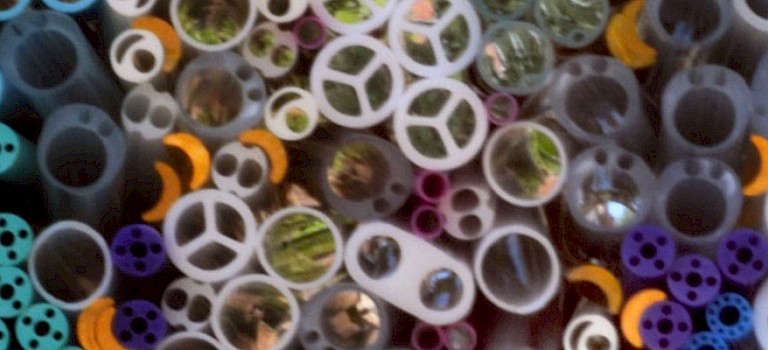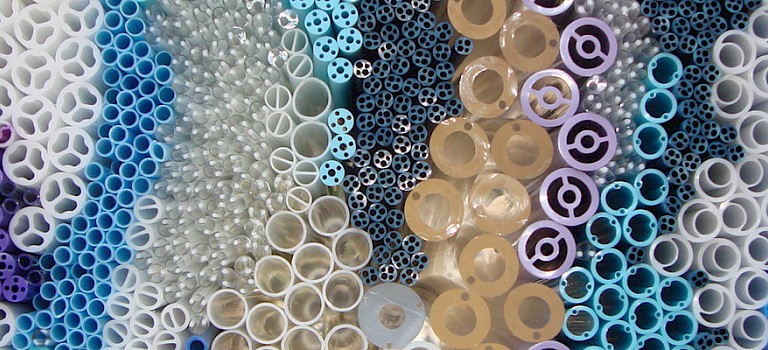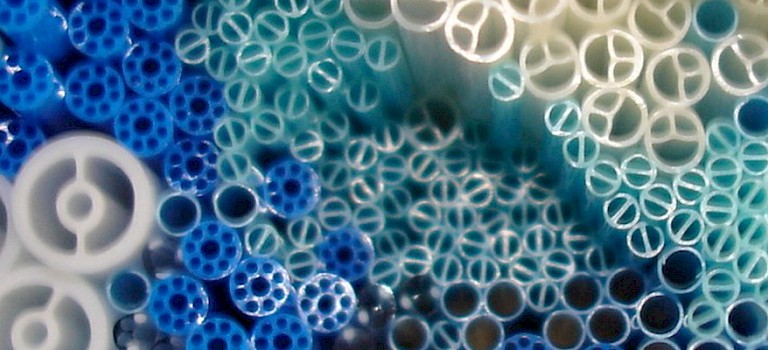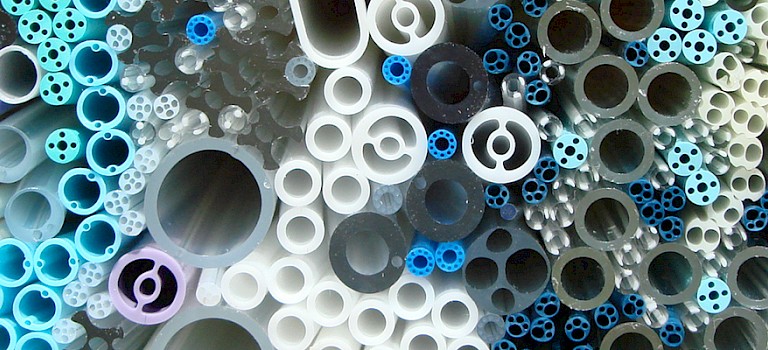Polyurethane (PUR) was invented in 1937. Polyurethanes are segmented polymers: they have a soft segment for flexibility and a hard segment for strength.
Polyurethanes offer longevity, toughness, flexibility, high abrasion and tear resistance, kink resistance and resistance to many chemicals and to fungus. Polyurethanes bond well to almost any surface and are more flexible than nylons. Drawbacks may include tackiness.
Polyurethane tubing may be transparent or opaque. The properties of polyurethanes make them suitable for bump tubing, co-extrusions, striped tubing, micro-extrusions, multi-layered walls, single and multi-lumen tubing and profile extrusions. Melt-processable polyurethanes are often used to make catheters, especially multi-lumen catheters, and for short-term implants.
Glossary Of Terms
properties
The physical and mechanical properties of a polyurethane, nylon or engineering resin depend on its chemistry, structure, chain length and bonds between chains. They can be altered by combining the material mechanically and chemically with other materials, creating a copolymer that shares some of the properties of both materials.
| Property | Measure Low | Measure High |
|---|---|---|
| Hardness | Soft | Rigid |
| Vicat Softening Point | 178°F (81°C) | 262°F (128°C) |
| Tensile Strength | 4200 psi (28.9 MPa) | 9600 psi (66.2 MPa) |
| Elongation at Break | 50% | 780% |
| Biocompatibility | May be suitable for remaining in the body as long as 30 days | |
| Sterilization | Dry heat Ethylene oxide (EtO) Gamma radiation |
|
| Trade Names | Carbothane Estane Pellethane Tecoflex Tecothane |
|
















